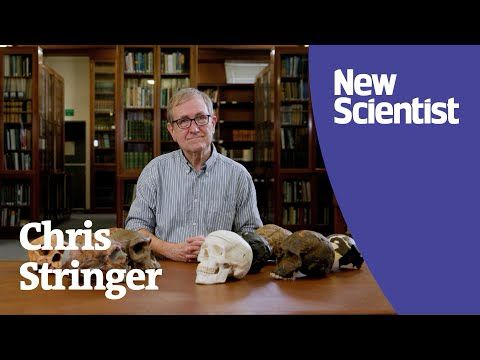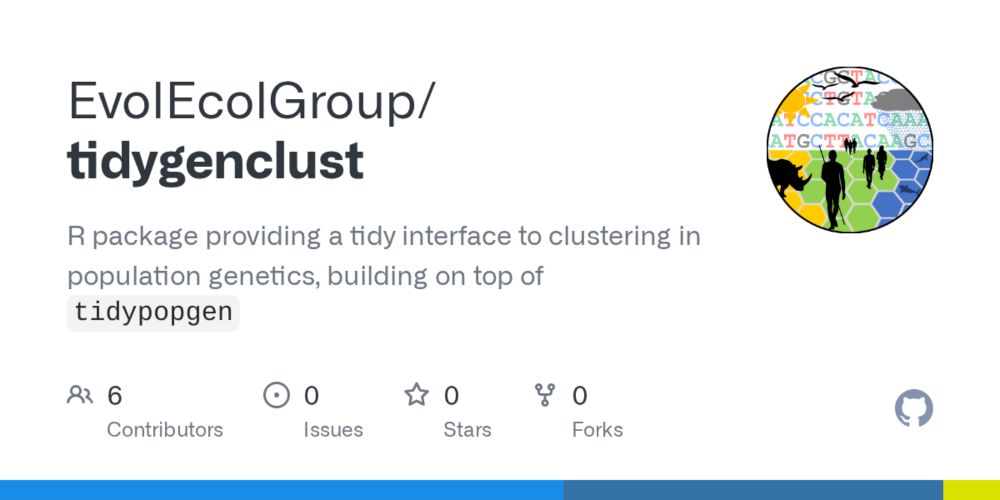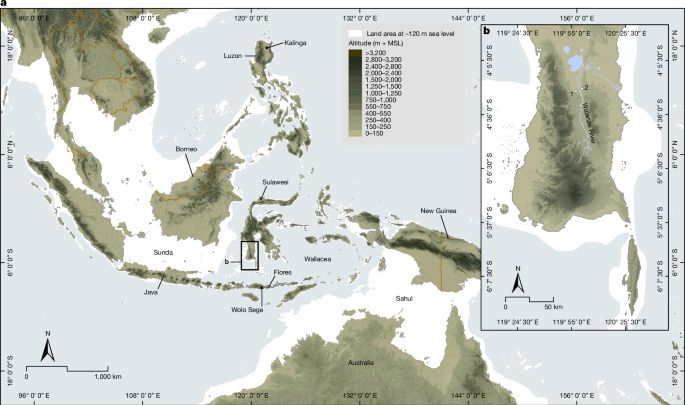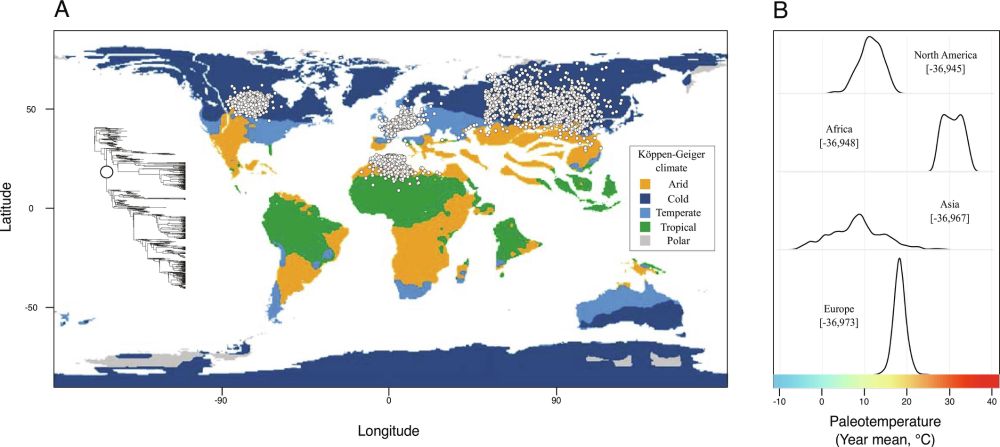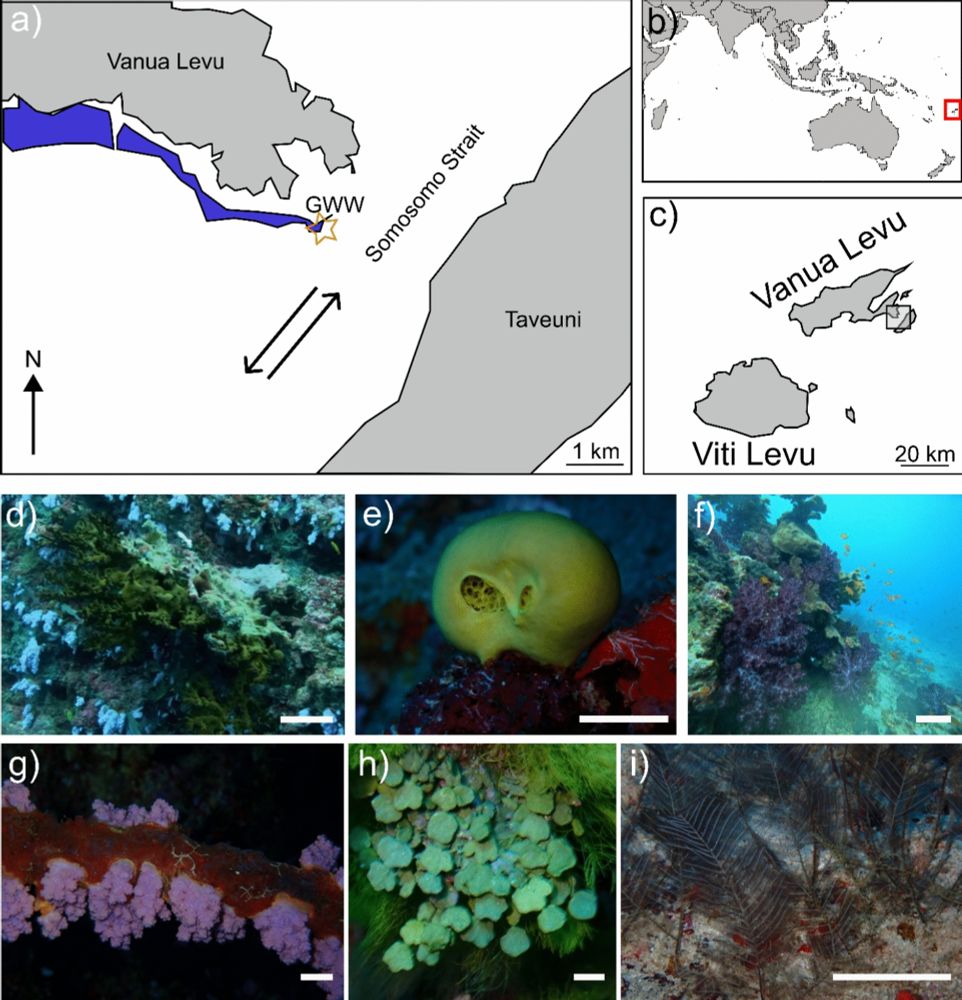
SoS 257: Repensando los primeros pasos de nuestra especie con Cecilia Padilla Iglesias
Esta semana, en "Sausage of Science" de @humbioassociation.bsky.social, hablo sobre mi, y sobre cómo el proyecto que hicimos en @eegcam.bsky.social cambia nuestra visión sobre el origen de nuestra especie en África 🤗https://open.spotify.com/episode/1aQzqEBgILUm2DQUmWWrmS?si=EcGBdjvHROaSd5ges_V9Zg
18.11.2025 18:00 — 👍 7 🔁 2 💬 1 📌 0
Huge congratulations to Zhe and everyone involved! 😊
08.10.2025 11:20 — 👍 4 🔁 2 💬 0 📌 0
This has been a wonderful effort by many lab members, and the credits for the fantastic leopard picture go to Ondra Pelanek 📷
07.10.2025 21:33 — 👍 0 🔁 0 💬 0 📌 0
Lastly, we saw that Europe also followed this pattern: during warm interglacial periods it was occupied by leopards but population sizes dropped during glacial periods, suggesting that the effect of climate could have been strong enough to catalyse their extinction.
07.10.2025 21:31 — 👍 2 🔁 0 💬 1 📌 0

We also found that climate stability over glacial cycles can explain the different levels of differentiation on continents. Africa remained stable over time, whilst Asian demography fluctuated more through glacial cycles, hence creating the isolation for needed for differentiation.
07.10.2025 21:31 — 👍 2 🔁 1 💬 1 📌 0

This simulated demography provided explanations to many patterns we observe. For example, African leopards show strong isolation from almost all Asian ones, and we found it is due to the shallow corridor between North Africa, the Levant and the Arabian Peninsula after the initial expansion.
07.10.2025 21:31 — 👍 2 🔁 0 💬 1 📌 0
We found that a simple Out of Africa model can capture the genetic diversity of leopards in Asia and Africa. Among all the demographic parameters, the ones associated with climate showed strongest signal, indicating climate was largely responsible for contemporary leopard demography.
07.10.2025 21:31 — 👍 2 🔁 0 💬 1 📌 0
Why is there only one subspecies in Africa whilst in Asia there are 8? And why did leopards disappear in Europe? In our study, we combine genetics, climate and archaeological data to build a Climate Informed Spatial Genetic Model and try to answer these questions.
07.10.2025 21:31 — 👍 4 🔁 0 💬 1 📌 0

#newpreprint: "Climate Shaped the Global Population Structure of Leopards and their Extinction in Europe": www.biorxiv.org/content/10.1...! Leopards are charming big cats but there are many mysteries around them. Thread 🧵
07.10.2025 21:31 — 👍 35 🔁 16 💬 1 📌 3

Birds all over the world use the same sound to warn of threats
The findings of a new study about communication between birds also offer key insights into the origins of language.
#newpaper out in @natecoevo.nature.com on Learned use of an innate sound-meaning association in birds, co-led by @jameskennerley.bsky.social when he was a PhD student at @eegcam.bsky.social . Nice summary on the @uk.theconversation.com theconversation.com/birds-all-ov...
05.10.2025 17:03 — 👍 21 🔁 6 💬 0 📌 2
YouTube video by New Scientist
Our common Neanderthal ancestor could be a million years old, says Chris Stringer
youtube.com/watch?v=MA1c...
27.09.2025 10:11 — 👍 86 🔁 23 💬 7 📌 0
I couldn’t be more excited about being given the chance to present some of the work we do at @eegcam.bsky.social this November & to listen to the talks by such an incredible line up of speakers! 🤩
28.08.2025 17:09 — 👍 19 🔁 5 💬 0 📌 0

Malaria shaped human spatial organisation for the last 74 thousand years - preLights
The distribution of early human settlements in Sub-Saharan Africa might have been influenced by avoidance of mosquitoes that spread malaria
The distribution of early human settlements in Sub-Saharan Africa might have been influenced by avoidance of mosquitoes that spread malaria
A new #prelight of Alejandra Leffer's group talks about the preprint by @margheritac17.bsky.social , and the team.
20.08.2025 10:43 — 👍 8 🔁 2 💬 0 📌 1
Thank you @prelights.bsky.social & Alejandra Leffer's group for choosing our preprint on @biorxiv-evobio.bsky.social and for this chance to talk about human- #malaria coevolution!🦟
@eegcam.bsky.social @elliescerri.bsky.social @MPI_GEA
22.08.2025 12:47 — 👍 16 🔁 8 💬 0 📌 0
3 exciting job opportunities at the new "HUMAN ORIGINS" Cluster of Excellence at Tübingen, for which I am an external PI. We are looking for early career researchers ready to launch their independent group and ask some exciting questions!
18.08.2025 19:44 — 👍 7 🔁 4 💬 0 📌 0

tidygenclust: Clustering for Population Genetics in R
Background Population structure analysis is crucial for evolutionary research and medical genomics. Clustering methods, broadly categorized as model-based (e.g. ADMIXTURE) or non-model-based (e.g. SCO...
🚨🧬New #preprint and R package from the lab out in @biorxivpreprint.bsky.social🧬🚨: 'tidygenclust' combines the functionality of ADMIXTURE, fastmixture and Clumppling into R - allowing for reproducible clustering analyses and plotting all in one place!
www.biorxiv.org/content/10.1...
07.08.2025 09:49 — 👍 19 🔁 5 💬 1 📌 0
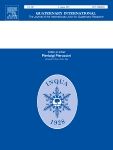
A multi-model approach to the spatial and temporal characterization of the African Humid Period
During the last c. 20,000 years, African climates experienced temperature shifts related to the last period of global deglaciation and moisture availa…
#Newpaper: the African Humid period through the lenses of pollen-based and mechanistic-based #palaeoclimate reconstructions!
Thanks @ecologypast.bsky.social, @markuslfischer.bsky.social, @paleoclimategirl.bsky.social and all coauthors!
28.07.2025 06:45 — 👍 9 🔁 3 💬 0 📌 0
ScienceDirect.com | Science, health and medical journals, full text articles and books.
Pollen-based reconstructions and a mechanistic climate model tell a similar story on the Africa Humid Period; @mikleonardi.bsky.social and Andrea contributed to a proxy-model comparison paper led by @ecologypast.bsky.social in Quatern. Int.: authors.elsevier.com/sd/article/S...
25.07.2025 13:38 — 👍 2 🔁 1 💬 0 📌 0
TODAY!!
19.07.2025 06:39 — 👍 22 🔁 5 💬 2 📌 0
We always try to be scientifically accurate, clear and inclusive in the way we present our research, but mistakes happen. This is why we are particularly grateful for constructive feedback such as yours! 2/2
19.07.2025 11:02 — 👍 2 🔁 0 💬 0 📌 0
We fully agree with this, and our group members are quite involved in discussing these topics with a wider public (see for example @ceciliapad.bsky.social and her work with @sapiens.org or @mikleonardi.bsky.social who created a free board game about evolution and climate change). 1/2
19.07.2025 11:02 — 👍 1 🔁 0 💬 1 📌 0
I see your point! As it was a sentence quoted from Andrea Manica (who is non-African) we thought it would work, but as you mention it may indeed lead to some misunderstanding!
19.07.2025 10:52 — 👍 2 🔁 0 💬 1 📌 0
Thanks for spotting this! You are right, it should read "we all non-Africans derive from a group of people that came out of Africa about 50,000 years ago".
17.07.2025 12:02 — 👍 2 🔁 0 💬 1 📌 0
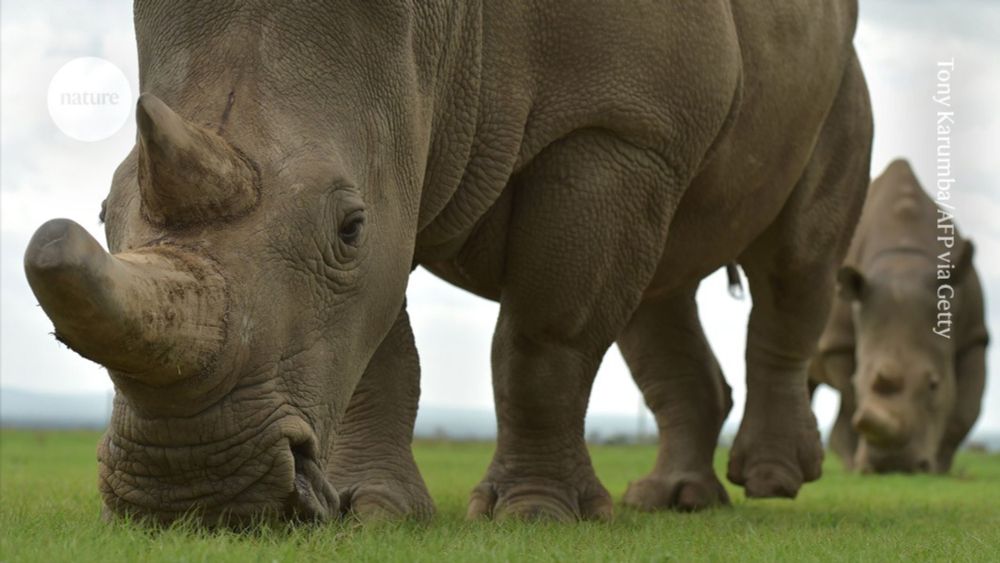
Ancient proteins rewrite the rhino family tree — are dinosaurs next?
Molecules from 20-million-year-old teeth are among the oldest ever sequenced.
Molecules from 20-million-year-old rhino's teeth are among the oldest ever sequenced. New @nature.com paper by Professor Andrea Manica and @mikleonardi.bsky.social @eegcam.bsky.social out now: www.nature.com/articles/s41...
Read more here: www.nature.com/articles/d41...
11.07.2025 09:39 — 👍 5 🔁 2 💬 0 📌 0
Ecologist working on island ecology 🏝️, tropical ecology, ecological networks, species interactions, seed dispersal 🐦🐢🫐, restoration ecology, biological invasions 👽, community ecology, global change 🌍
📍Postdoctoral researcher at @IMEDEA_UIB_CSIC
Serra Hunter Lecturer Professor at Universitat de Barcelona. Interested in human population diversity.
'Ramón y Cajal' Researcher at @irec-csic-uclm.bsky.social
| Biodiversity | Hybridisation | Population genetics | Speciation |
https://victornoguerales.weebly.com
Geologist, paleobiologist, @CNRS.fr research scientist, co-director of the Climate team at CEREGE @climatecerege.bsky.social, PI of ERC-funded
@dispersal-erc.bsky.social project
#ornithology 🥚🐣🐦| #birdmigration #birdringing #birdtracking | #broodparasitism | #TeamBird @ivb-cas.bsky.social @czechacademy.bsky.social | #HABITRACK
https://www.instagram.com/rytikerttunen/
https://scholar.google.com/citations?user=aGO2IjIAAAAJ&hl=en
PhD @ University of Oxford. Interested in rapid evolution, insect genomics and understanding the effect of the Anthropocene 🪰🪲
A centre of excellence in bioarchaeology, specialising in the analysis of human, animal and plant remains and molecular techniques - proteins, lipids, DNA and stable isotopes. Department of Archaeology, University of York
Pathogen evolution using Ancient DNA 🧬💀🦠
Postdoc at @ugiatucl.bsky.social van Dorp Group UCL
Previously @crick.ac.uk 👩🏽🔬👩🏽💻
Assistant professor, Department of Ecology and Evolution, University of Lausanne.
Interested in how behaviors are learned during early life, in the context of the environment 🪺🦅
Professor of Evolutionary Biology at Anglia Ruskin University, Cambridge.
www.thepeergroup.org.uk
PEER Group research is focused on primate evolution and ecology, with a particular emphasis on vocal communication and the evolution of language.
evolutionary ecology, eco-evo feedback, population genetics, species' range & niche limits, speciation, evolution of genetic variance and genetic architecture 🧬 🧪 🌱 🐟 🦠 🦤 🌏 💻 @univie.ac.at
Science Writer | @NatGeo Explorer | Lecturer @oxford_uni | Mum. (Not always in that order)
Updates from research into the Palaeolithic archaeology and its palaeoenvironmental context in the northern Namib Sand sea... #PANS (funded by The Leverhulme Trust) and #RiVER fieldwork expedition (funded by RGS Thesiger Oman Fellowship)
Dr in Prehistoric Archaeology 💀
Paleoanthropologist
Tooth size, wear and topography🦷
Human evolution 🐒.
📍University of Barcelona
#Postdoc #aDNA #UNIL
Personal website: https://researchprofiles.ku.dk/en/persons/miren-iraeta-orbegozo
Postdoc at U Potsdam with Martin Trauth. Beaming between R and Matlab. spatial-modelling/time-series-analysis/paleo-africa-evolution
Palaeoecologist and biogeographer at the University of Amsterdam.
Ecology of the Past: www.ecologyofthepast.info
Science writer, editor and author @ the Natural History Museum, London | Queer animals, birds and embroidery | he/him | ✏️🏛🦦 | joshlukedavis.com
Archaeologist☠️The Canary Islands🌋





